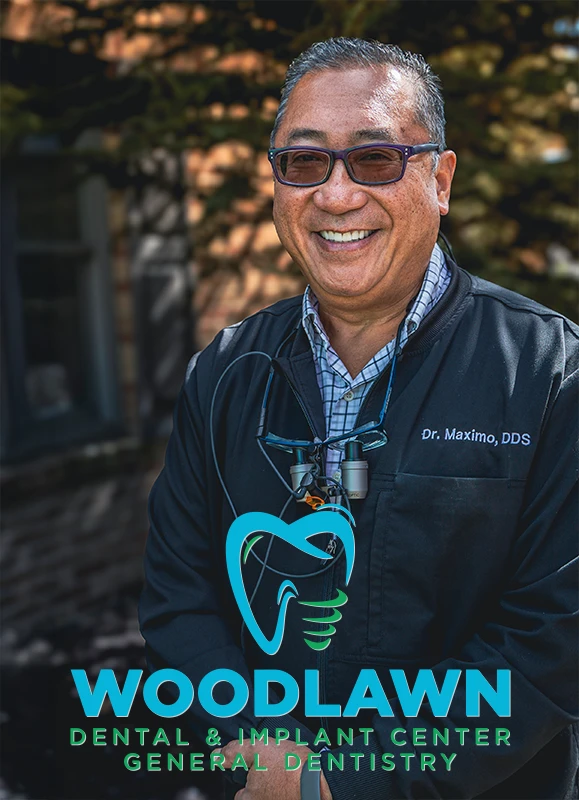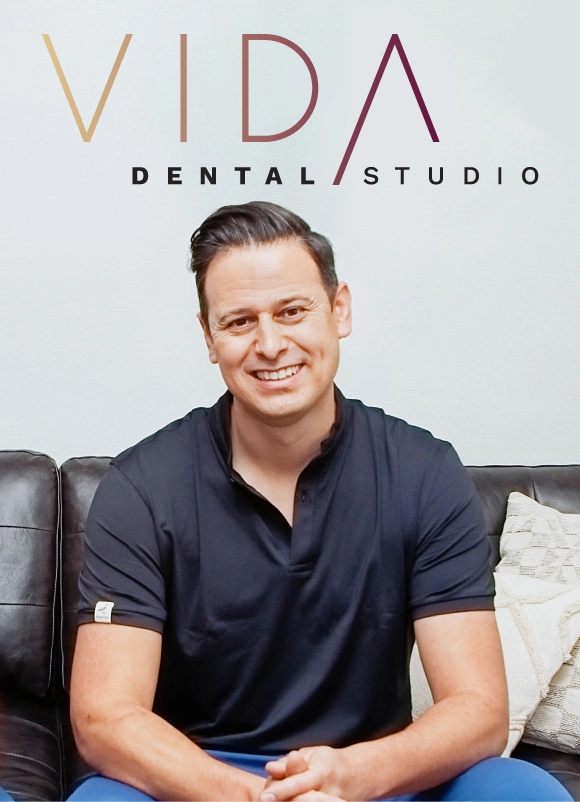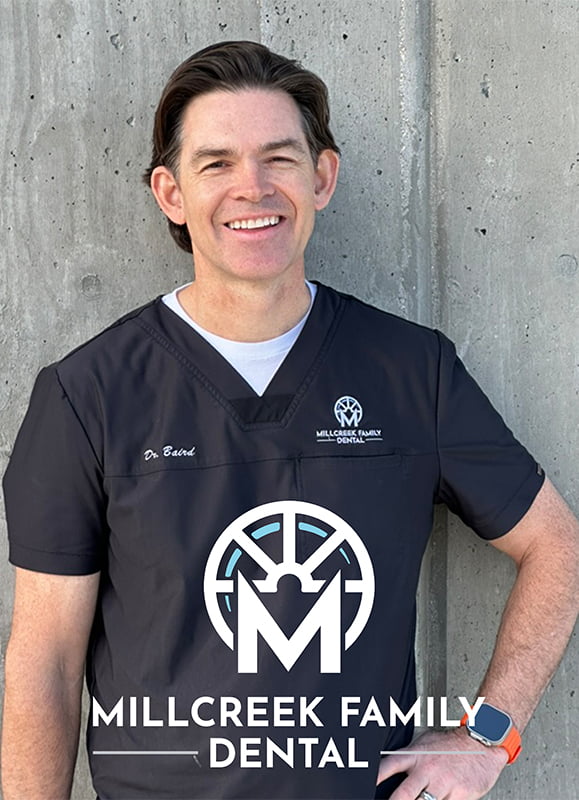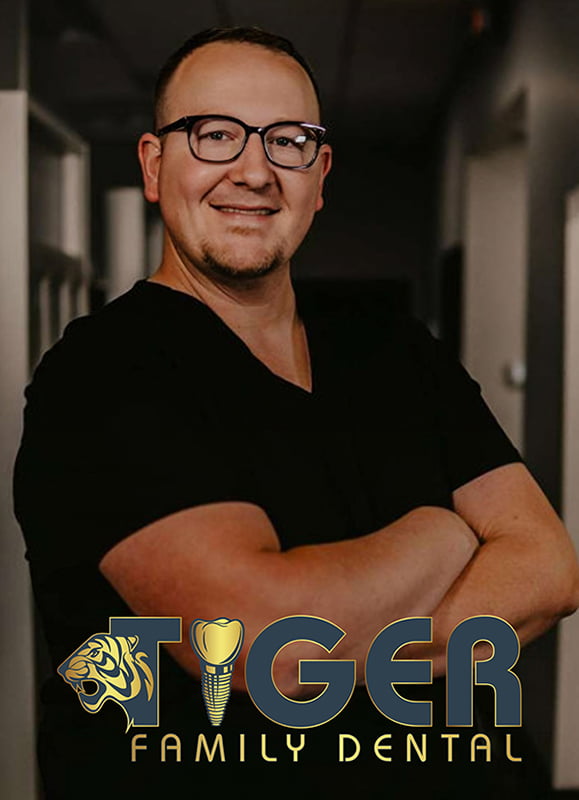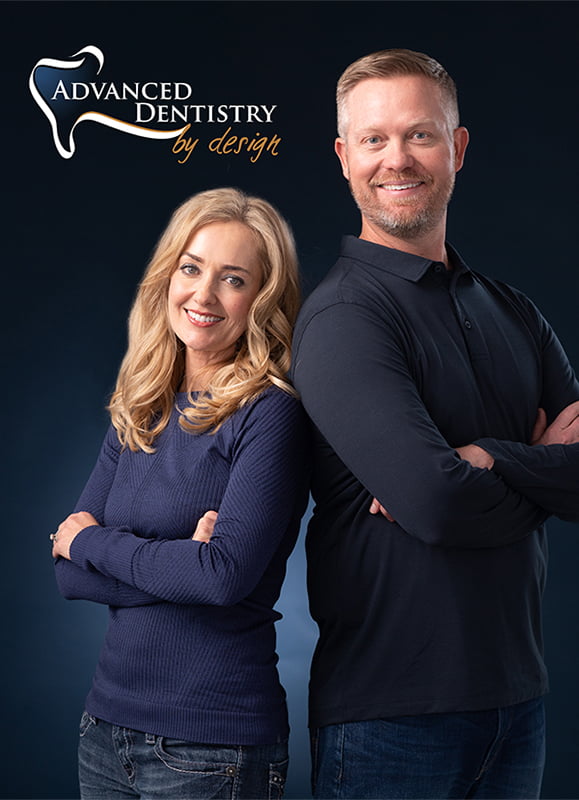Communication = Productivity (E.252)
“When you get the communication right, productivity takes care of itself.”
– Dr. Bruce Baird
WHAT THIS EPISODE REVEALS
Most dentists think they need more patients to grow. But often, the real bottleneck isn’t your schedule, it’s your team’s communication.
In this episode, Dr. Bruce Baird shares how refining patient conversations eliminates stress, builds trust, and creates productivity that feels effortless.
This isn’t about scripts. It’s about clarity, confidence, and aligning your entire team to communicate clinical value.
WHAT YOU’LL LEARN
- Why poor communication sabotages productivity and team morale
- How to frame treatment in ways patients instantly trust
- The mindset shift that prevents costly no-shows and cancellations
- How to train your team to communicate like you, without burning out
IF THIS SOUNDS FAMILIAR
- Patients say “I’ll think about it” after your best case presentation
- Your team struggles to handle financial conversations confidently
- You’re working harder but not seeing the results you want
This episode gives you the tools to align your team and unlock stress-free productivity.
READY TO TRANSFORM YOUR TEAM’S COMMUNICATION?
Shift your team’s mindset. Build trust. Drive case acceptance.
Explore the Clinical Calibration Institute →
TRANSCRIPT
[00:00:00] Dr. Bruce Baird: Hi, my name’s Dr. Bruce Baird with the Productive Dentist Podcast, and thanks for joining us today, and I am excited to talk about something that has been, uh, I think one of the keys, uh, with the Productive Dentist Academy over the years, which is increasing productivity and reducing stress by using good communication skills and, you know, I’ll give you some examples, um, you know, you have that, uh, you have that patient come in and they’re gonna have a crown done, or they’re gonna have a filling done, um, and the tooth hasn’t been sensitive at all. Uh, I, I kind of joke a lot of times I always say that, uh, I’ve never seen a shallow filling. Why is that? Because, I mean, if you put a burr on a tooth, there’s a chance it could be sensitive, and what I decided, I, I started looking at anything that caused, I talked about this last time, about anything that causes stress to patients, anything that causes stress to team or anything like that but the big thing is for me to become more productive. Is the communication and saying, “Hey Bob, you know, if I’m doing a crown on number eight, this is the hardest thing in dentistry is to match a single tooth and when you smile, you know you’re like me, you show all the way up, you know, you show your gums, and so when we do that crown, can it be done? Yes. It’s very difficult and we’ve got some choices, um, we, my preference is, is to use a lab that is a high-end ceramic lab or we do it ourselves right here in office, um, it may cost a little more, but Bob, it has to be perfect. It cannot, it, it has to match. Does that make sense?” And Bob says, “Oh yeah. I mean, I want the best up there ’cause it’s right in front,” and so cost goes to the back, back of the, the line. Because why? Well, because the patient understands now that this is hard, as opposed to me going in 25, 30 years ago, and a patient comes in and says, “Hey Doc, can you fix my front tooth?” And I go, “Oh, sure. Don’t worry. Sit down. We’re gonna have fun. Uh, you know it, it’s not gonna hurt. We’ll go slow and easy, and then you get the crown back,” and let’s say you did everything right, that and injection didn’t hurt, and all the things that you did were at the highest level.
[00:02:36] Dr. Bruce Baird: You could do it, but you forgot to communicate the difficulty. Okay, and so you, you try it in, you put the thing in, and I, I, I know you guys have never done this, but you put that crown in, you go, oh, okay. Well, you know, this is a tough one because it, it, it doesn’t match the way it has to match. Okay? So I’m gonna send it back to the lab with another shade tab, and I’m gonna do that. Okay, Bob, and Bob says, “Okay, you know,” so you send it back to the lab, and then they send it back, and you look at it one more time, and you say, you know, Bob, this is so hard. I’m gonna send you to see my lab, and so you send the patient to the lab, and the lab does the dentist, I mean, does their shade matching and everything else, and then it comes back and you look at it and you’re going, okay, it’s, it’s good. You know? Is it perfect? Hmm. You know, that’s when you bring your team in and everybody goes, oh, doesn’t that look good, Bob? “Oh yeah, and he’s like, yeah, they look great,” but they’re not perfect. It’s not exactly what we need. So I looked at the ability to be able to stain, custom stain and do those things, for instance, using C App but there’s so many new technologies out there right now, but I wanted to learn how to stain a front tooth.
[00:03:47] Dr. Bruce Baird: So I took the classes, I learned how to do that so I could take any colored tooth and make it match, and so remember Bob getting that crayon and by the fourth visit, Bob’s looking at you like he don’t have a clue what you’re doing, doc, and that is stressful. Productivity goes down. We’re not, we’re not, um. We’re not producing at the highest level because we did not tell the patient, uh, about the difficulty, and so now I told ’em, this is very difficult. It may take us, it may take us about three or four or even five visits, but I want you to understand that ahead of time, but it has to be perfect. Does that make sense, Bob? Every patient I ever said that to, they go, oh yeah, okay. It’s gonna take five visits. Then when I learned to custom stain, and I would bring the patient in, we’d mill the tooth, I’d put it on, and maybe the base color wasn’t right yet. I’d mill another color that was good, but then I would go in and start to custom stain it. I would put it in and then Bob and I would look at it together and say, what do you think? He goes, “Man, that looks perfect.” One visit, maybe two, but one visit. Now, what is Bob’s thought process of our office of me at that point? I would say his thought process is this guy knows what he’s doing. I mean, he really does, as opposed to, I knew what I was doing before.
[00:05:15] Dr. Bruce Baird: I just didn’t communicate it. I just didn’t communicate it well. It’s the same with that filling, “Doc, that thing didn’t hurt before you worked on it.” Do you, you guys ever hear that? I mean, that is a, that is a buzzkill. Okay. That’s a buzzkill for the day. What happens to productivity? It goes down. Why? Because we didn’t communicate. I would say, Bob, you know, we gotta do a filling down here. It’s on this bottom right tooth. Say it’s number 29. It’s a bicuspid. I’m going in with a fish, otomy bur, and I’m opening up the occlusal pits and I’m looking at it and I’m going, “Wow, Bob. There’s a lot more decay in here than I thought. I thought it was, you know, I, I thought it wasn’t gonna be quite this big. We’re gonna have to keep an eye on this one for sensitivity and for, you know, and to make sure it’s okay, um, I don’t think you’re gonna need a root canal, you know? Um, but let’s keep a watch on it and I wanna see in two weeks but if you have a problem, I want you to call me.” You see the guy in two weeks comes in, Bob goes, Hey Doc, that tooth never hurt me at all. So what’s he thinking about you? Oh, you are the best dentist there is. Didn’t hurt at all when I said it could hurt. Does this make sense? Because it’s not. Now, if I said nothing, if I just said, “Oh yeah, it’s a little failing. We’ll get it done, do it,” and all of a sudden the patient, not that it happens often, but when it happens, it’s a buzz kill, um, and he goes, this tooth wasn’t hurting before. Now it’s sensitive. They go down and they’re at the bar, or they’re at the club, or they’re at church, or they’re getting their hair cut and they’re talking to people around them and they’re just saying, “Yeah, I got this sensitivity every time I drink something cold, it’s just so sensitive, and the tooth wasn’t hurting before.”
[00:07:03] Dr. Bruce Baird: Where’d you go? “Oh, I went and saw Dr. Baird.” I don’t want that. I don’t want people talking like that. I’d rather just tell them this is a lot deeper than I thought. Which I can honestly say I don’t think I’ve ever gone into a tooth that the decay was less than I thought, um, and by, by just talking to that patient and explaining to them, educating them on the difficulties, then all of a sudden, you’re a great dentist, everything’s great. Your attitude is phenomenal. We already talked last time about communications with your team, getting everybody on the same page with clinical calibration, um, but your team hears what you say to the patients and they’re gonna say it to the patients, which to be honest with you, is just crazy good. It helps in every aspect of being a dentist. What about that patient who goes to the front desk and they don’t have firm financial arrangements. They just walk up front and front desk says, “Well, your total today is gonna be 30, uh, gonna be $1,300.” They go, “How much?” Now, when they say how much something has fallen apart, the system is has broken in your own office, because they should know that. We have ’em sign. We go through and we show ’em everything and we talk to ’em about it, but my chair side, my treatment coordinator, is the one who’s in charge of that chair and in charge of making sure that patient understands exactly what the costs entail.
[00:08:40] Dr. Bruce Baird: Another thing that’s a problem is when patients don’t show. Why do patients not show up for their appointments? What do you think? Usually it’s a lack of clarity. It’s a lack of, they don’t really know what you’re doing or they can’t afford it. They said, yes, I’m gonna set the appointment up, but they really can’t afford it, and that’s where communication, communication is noticing how somebody looks, how they speak, how they nod their head, “Oh yeah, I totally understand. Everything’s good. Let’s get it done.” You know, I want that patient to be a hundred percent sure this is the type treatment that they’re having done, so they know exactly what it is, so that they know exactly what it’s gonna cost, and the financial arrangements have been made solid so that, and, and they’re convinced that, yes, this is what I need to do. The, the bad thing is when they go, it’s gonna be a total of $2,200 or 3000 or whatever it is, and the patient goes, okay, yep, let’s go ahead and set up an appointment but nobody has asked them any questions. No one has said, um, you know, “Um, do you want to pay that all cash upfront?” Well, yeah. Let me think about it. Well, think about it. They ain’t showing up. Uh, or let me, uh, yeah, let me talk to my spouse. Well, that means they’re not showing up. What if they say, what if you go through the deals and said, you know, we can, I don’t need financing, doc. I got the cash. I’m ready to go. Let’s, let’s do it. Okay. It’s how they communicate with us and how we communicate with them. My team, every single one of our treatment coordinators in our entire office, they know how to communicate and how do they know ’cause they’ve learned it over a period of time because they don’t like having their patients not show up.
[00:10:33] Dr. Bruce Baird: They don’t want Bob not to show up for his appointment. I always look back and I say, okay, what did we do if Bob doesn’t show up? Which is so rare in our offices to have patients not show up for their appointments, um, and so that would be, you know, that’s unusual and I would always go back and look, where did the ball get dropped? Lemme see the financial arrangement sheet. Let me see this. Let me see that when they didn’t show up, sometimes there was no financial arrangement sheet. The patient just said, “Oh, don’t worry about it. I’m gonna pay cash.” Yet, patient didn’t sign anything. Patient wasn’t, wasn’t in total understanding or possibly they had the money, but your exam process was very blah. You know, you didn’t go through the risk factors. The patient did not understand that the risk factors are the reason that they’re having decay issues. That they’re having periodontal issues, that they’re having functional bite issues. So by explaining those things, by getting those things taken care of with the explanation, and I, I would expect to hear every time, like I said last time, I said, that patient says, “Wow, that’s the best exam I’ve ever had. Why hasn’t any other doctor ever done this? Well. You know, I don’t know. We keep learning things, Bob. You know, we’re learning every week. I don’t wanna throw another dentist under the bus but what I do want to do is I want Bob to understand that he’s the problem. He’s the one not brushing. He’s the one that’s doesn’t floss. He’s the one that doesn’t wear an occlusal guard. He’s the one that doesn’t show up for his appointments for cleanings. He’s the one, you know, all of these things. It’s not our fault, and that’s one of the things I love. That’s communication. I want them to 100% understand I am your consultant. I am the guy that you, I want you to trust me because it’s not about the money.
[00:12:31] Dr. Bruce Baird: If I can talk to a patient just straight up and explain in five minutes, 10 minutes about the risk factors, this is the things that I look at. I look at the same things on everybody, Bob. I always look at the gums first and we go through that process, um, what other things, a dental implant. Do implants fail? Well, if you’ve done enough of them, you’ve had an implant failure. I’ve, I’ve heard people say, oh, I’ve never had a failure. We haven’t done very many. Uh, or you’re, you’re moving every, every six months because Yeah, I, I tell a patient ahead of time, I say, I, I would say, Bob, let’s, let’s use Mary. I’m, I’m picking on Bob a lot, but Mary, you know, the deal is. You’re a perfect candidate for an implant, and lemme lemme tell you about implants. It’s gonna be fairly simple. Remember when that tooth was extracted? I went back. “Oh, it was horrible. It was so hard.” Which I don’t want my extractions to be horrible or hard. That’s why I love sedation and I love, you know, I love having ’em knocked out but remember, how was that experience? Oh gosh, it was horrible. I said, “Lemme tell you something. Putting the implant in is gonna be one of the simplest things we do, um. Not expecting you to swell. You could get a little swelling. You could have a little pain, but usually patients take a couple of ibuprofen, uh, Tylenol. I’m gonna give you some pain meds just in case, but most patients don’t even need ’em, and it’s gonna take me probably 10 minutes to put it now. That sounds good, doesn’t it?” “Yeah, it sounds great.” but about one outta 20 of these, the bone doesn’t grow to the implant. I don’t need to get into osseointegration and, and bone morphogenic proteins and all the things that I don’t want them to glass over but the simple conversation of, yeah, one in 20, they just don’t work. Your bone doesn’t grow to it. I said, but the good news is when it doesn’t, we usually can clean that out, put another implant in it, and then it works fine. Because how many times have you done a second implant and it failed? Now that has happened to me.
[00:14:38] Dr. Bruce Baird: I put in. Probably 18 to 20,000 implants over 40 years. So it has happened, but most of the time the patient will come in and go, how’s it doing, doc? It feels, I mean, it feels okay. It’s not hurting everything. Is the bone growing to us? I mean, look, man, you’re healing great. Uh, another thing I do is following protocol. Did you take your antibiotics? Did you, do you know, did you go through? Are you using, you know, rinses? Are you, you know, what have you done? But ultimately that is how patients, it’s not just how do you build trust, communication? How do you build relationships? Communication. Uh, communication, does it lead to productivity? Absolutely. All day long, every day. I always used to say if I get in relationship with the patient, the money always takes care of itself, and I honestly, truthfully believe that I never worry about money. I just worry about making sure the patient understands what it is that we’re doing. Now, I don’t want you to over explain. I don’t want you to take a person who comes in and is nodding their head going, “Yeah Doc, let’s do it. I’m ready to go.” Uh, I still want you to go through your risk factors. What I don’t want you to do is then start talking about the surface, um, the surface blast on your implant or the type material you’re using. Now, I say type material. I would say this is the best material in the world, you know, that’s why we use it. This is the best impression material. This is the best, whatever but I don’t want to get into the science. Unless the patient is an engineer, then you might have to talk about the molecular structure of titanium but for the most part, you’re not gonna have to do that.
[00:16:23] Dr. Bruce Baird: So, so do you see what I’m, see where I’m going with this? Do you see that doing dentistry at the highest level is having a patient show up for their appointment, pay for their appointment, and think that you are the best dentist on the planet? Productivity takes care of itself but if you just walk in, I’ve had associates just walk in and go, hi, how are you doing? My name’s not, in fact, I just went to, my wife had a, uh, had a exam at at, at her position, and I’d never met the guy and she hadn’t either. It was a new doc and we went in and he just walked and goes, “Hey, how are you?” Turns his back to us and starts asking questions with his back to us. We see that all the time. I even see, I’ve seen it with associate docs that, you know, they just come in, okay, uh, what, what you got going on? You know, it’s like, I’ve got nine other things I need to be doing. No, it’s just me and you. I’m here. My team has, they already know all this. So they’ve already prepped them by talking to them about a little bit about risk factors, a little bit about, you know, all the things that they see in the mouth. Are they diagnosing? No, but I want ’em to know when they look at a tooth, I want them to have a pretty good idea. I mean, a really good idea. Dr. Baird’s gonna recommend a crown on that. Dr. Baird’s gonna recommend probably not a crown where you have to whittle the whole tooth down, but something where we’re gonna make a puzzle piece like it fits in and it looks just like your natural tooth. I may say the same thing when I come in, but what does that tell the patient?
[00:17:59] Dr. Bruce Baird: Great communication. This team is on top of it. They know exactly where we’re headed, and you know, I, I can remember back when I first started in dentistry, I was always frustrated ’cause I felt like I was frustrated with my team ’cause I figured they should know what to do ’cause they went to school and training to learn to be a dental assistant but they didn’t learn to be a dental assistant or a treatment coordinator with me. That’s when we talked about that, um, couple of, couple of podcasts ago, but now I want them to understand. So that’s part of this Clinical Calibration Institute. It’s getting everyone on the same page. We talked about that but clinical calibration know to be a founding member, it’s like 400 and 540 bucks a month, or four 50, something like that $540 a month to train your entire team. Your, your administrators are all on the same call with other administrators. You’ve got your treatment coordinators, they’re with treatment coordinators. You have your office managers, they’re with office managers. You have your associates, they’re with other associates. You have the docs, they’re with the docs, and so as you develop that standard of care and, and the type of dentistry you’re doing, I think the most important thing you can do. Is, learn the communication skills. Buy the books. Go out, look it up. Now, just chat. GPT. What are the best books for me to read on neurolinguistic programming, meaning facial expressions, uh, you know, in other words, how people are saying things. Did I do that? You’re darn right. I did. Why? Because I had trouble getting patients to say yes but once I got it, man, everything changed.
[00:19:43] Dr. Bruce Baird: Dentistry became so much easier. My stress levels got so much lower. I was able to be massively productive in much shorter amount of time. So, you know, I hope this has been good. I mean, I hope what I’m saying is resonating with you because. The docs who get it become highly productive but to me, productivity, you know, what is joy? Is it money? Uh, you know, maybe for some, for me, it’s, yes, I wanna make a great living. I want, I don’t wanna worry about the money. If I take great care of the patients, I don’t have to worry about the money but I also wanna have time to spend with my family. I also wanna have time to spend with my buds. I also wanna have time to, um, play golf. So, I can’t do that if I don’t have the communication skills to maximize, uh, the effect of getting to sit down with a person who needs dentistry and then having them walk out the door and not do it. You know, people always say, well, I need, I need a lot of new patients. Well, now you don’t need a lot of new patients. Pete Dawson told me that years ago, and Pete wrote, wrote a forward in my book. I wrote on implants back in 91, but. Pete says, “No, we don’t need a lot of patients. You just need 18 to 20 new patients a month,” and back then I’m thir 32 years old, 33 years old, and I’m going, yeah, Pete ’cause you see other doctors, you see kings and queens. You people come in to see you. You don’t need 18 of ’em. I found out later on, no, if you market to the right people, which we’ll talk about that, coming up but if you market to the people who need the things you love to do and you learn to communicate, guess what? Bingo. Game over. So anyway, this Productive Dentist Podcast, uh, please tell your friends, uh, and. Clinical Calibration Institute. Go to the PDA website, productivedentist.com, sign up for CCI try it for a few months. I mean, it’s, you know, get your team, get, get them excited about something. You don’t have to fly to Timbuktu. This is all gonna be done. Like a lot of people like to educate, you know, right here, just what we’re doing now. So I look forward to our next podcast. This is Dr. Bruce Baird with Productive Dentist.
Have a great experience with PDA recently?
Download PDA Doctor Case Studies
